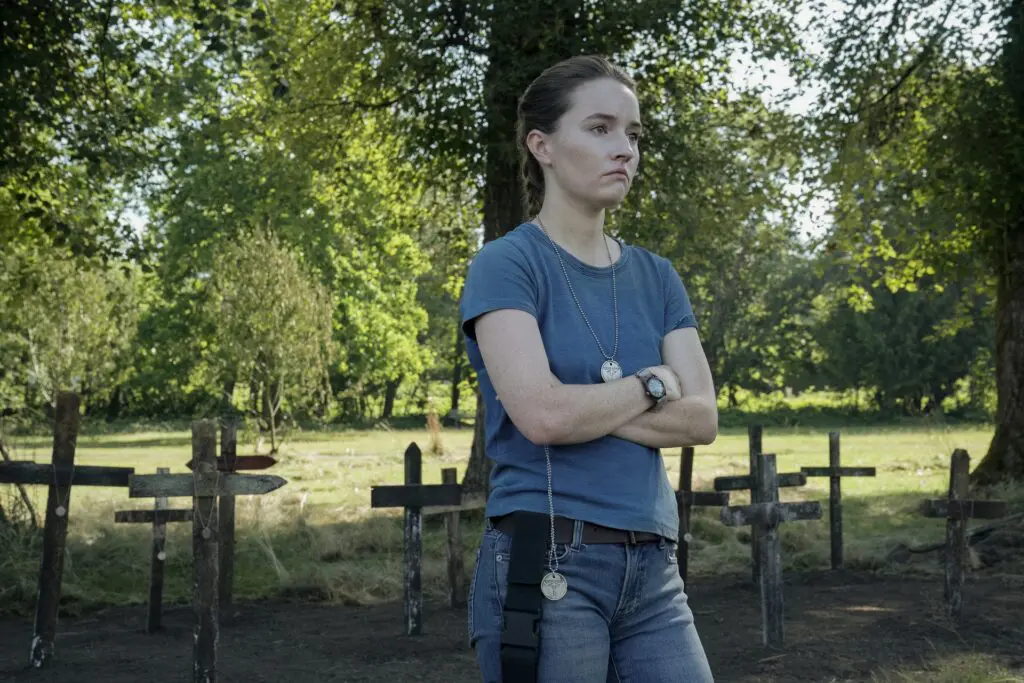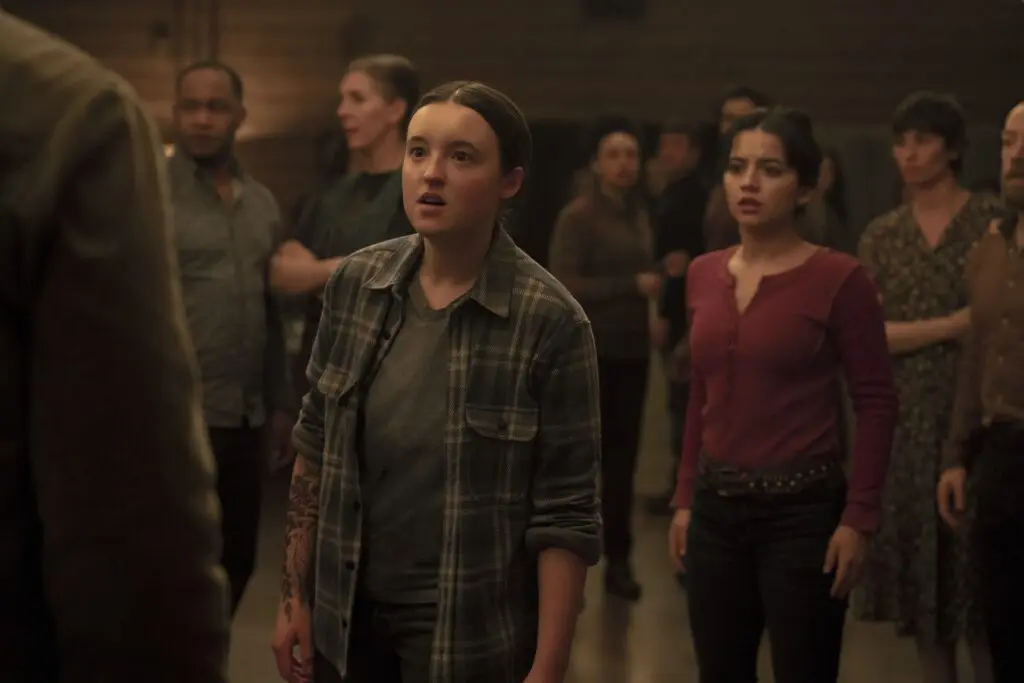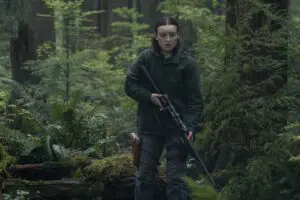Summary
The Last of Us Season 2 shows many significant changes to the source material in Episode 1, but a great deal of care has evidently been taken to preserve its most iconic scenes and essential feel.
The reason why The Last of Us worked as a live-action video game adaptation is largely because it knew it couldn’t just adapt the game directly. It was pretty close, full of recognisable moments and backdrops and – to a slightly lesser extent – characters, but it made concessions that reshaped a story that was cinematic by video game standards into one that was palatable for a season of prestige television. It’s worth mentioning this because Season 2, which adapts the much bigger, more ambitious sequel, 2020’s The Last of Us Part II, does this to an even more noticeable extent, at least if Episode 1, “Future Days”, is anything to go by.
Unfortunately I can’t talk about this without both deliberately and inadvertently giving away stuff from the game which will in turn give away stuff from this season for people who haven’t played it. There’s a spoiler warning at the top for a reason and with this show it applies more than usual, especially since most of the interesting things about it are how it’s reworking the game’s narrative into a new format.
So, let’s talk about it.
In The Intervening Years
The Last of Us Season 2 picks up five years after the end of the first season, which, you’ll recall, is when Joel rescued Ellie from certain death at the hands of the Fireflies and then lied to her about having done so. Ellie’s immunity to the cordyceps infection meant that she could be instrumental in the creation of a cure, but Joel, who had come to see her as his daughter after his own died in the early days of the outbreak, couldn’t allow that to happen. He killed all of the Fireflies and took Ellie to Jackson, where they now live with Joel’s brother, Tommy, and a handful of other characters.
But all those Fireflies Joel killed had friends and loved ones, and “Future Days” starts with them. Abbey is one of them, and we meet her standing over the graves of her fallen Firefly compatriots and swearing revenge on Joel. We don’t see her and her group again until the end of the premiere, when they’re looking over Jackson, so for both her and Ellie, five years have elapsed under our noses.
This is absolutely central to a lot of the tension of The Last of Us Season 2, especially in Episode 1. Joel and Ellie have grown distant, their relationship fractured by something – we can tell what, but it’s left unclear for now – that has happened in the intervening years. During those years, Ellie has gotten a lot older, literally and figuratively, and is beginning to find herself through a burgeoning relationship with her crush, Dina, and a lessening parental influence from Joel and, to a slightly lesser extent, Tommy. It’s making her act out in dangerous ways. And all of this will matter as we go.

Kaitlyn Dever in The Last of Us Season 2 | Image via WarnerMedia
The Same But Different
The game subscribes to this same structure, more or less. But there are multiple things throughout the premiere – Abbey’s introduction, Ellie and Tommy’s sniping session, a New Year’s Eve hoe-down that is broken up by bigotry, etc. – that are pulled from very different points in the game to provide a more coherent narrative through-line. And there are new inclusions, like Joel’s therapy sessions with Catherine O’Hara’s Gail, which weren’t in the game at all.
Gail is the widow of a character named Eugene, who technically wasn’t in the game either, but was mentioned several times; Ellie and Dina discover an outpost of his that he was using to tinker with technology and grow weed, and a pretty significant scene happens there, so I suspect they’ll keep it in. But the circumstances of the Eugene character have been changed, since we can infer from Gail’s dialogue that Joel killed him in this version of the story. This seems like another Frank and Bill scenario.
But a lot of the game is transplanted pretty directly. Ellie and Dina’s raid on a grocery store is a brilliant sequence that also draws on the game’s actual mechanics – the “Listen Mode” nod when Dina checks for Clickers, and so on – and tries to provide a more TV-ready explanation for the ways that the sequel expanded the gameplay. Ellie’s first encounter with a Stalker, which is a more intelligent version of the Clicker, gets more focus because, while it’s par for the course for a game sequel to introduce more enemy variants to keep the gameplay loop fresh, that doesn’t quite work on the screen.

Bella Ramsey and Isabella Merced in The Last of Us Season 2 | Image via WarnerMedia
Still to Come
The Last of Us has already been renewed for Season 3, which makes sense since it would have been impossible to condense a 35-hour game into seven episodes. With the changes that have already been made, it seems fairly obvious that the first season is building towards the event that kick-starts the game itself, though I won’t give away what that is.
This is why, I suspect, we’re cramming all of the Jackson scenes together at the start. The dance between Ellie and Dina happens near the end of the game, in a flashback, and there’s a case to be made that it works better there, because it’s harkening back to a simpler time before so many deeply awful things happened. But here it’s used to situate us in Jackson’s status quo and reiterate both the sexual tension between Ellie and Dina and the frosty relationship between Ellie and Joel (crucially, though, the conversation on Joel’s porch, which literally ends the game, is left out. That will only work at the end of the season, I suspect, so it’s a good choice to avoid it for now, even though it’s teased.)
In the game, Abbey is introduced before the audience understands who she is, and it’s only quite a bit later in the game that players are thrust into control of her and get to learn her point of view (like Ellie’s story, Abbey’s is also dotted with flashbacks that take place during the five years between games.) The Last of Us Season 2, Episode 1 has already revealed Abbey’s motivations, which makes me think that we’ll ping-pong back and forth between her and Ellie, seeing the various things they’ve been up to, as we build steadily towards an inevitable collision course. That’d leave Season 2 to have a more direct approach without having to squeeze in the supplementary scenes, like the dance, that are being front-loaded here.
It’s a novel approach that completely reworks the structure of the game. It might not work. But based on the first season, I have every confidence that it probably will, especially given how brilliant the cast is – Isabella Merced, take a bow! – and how much attention to detail has been paid in transplanting some of the game’s most iconic visual elements, mechanics, and set-pieces into this new form. I guess we can only wait and see.
RELATED:




